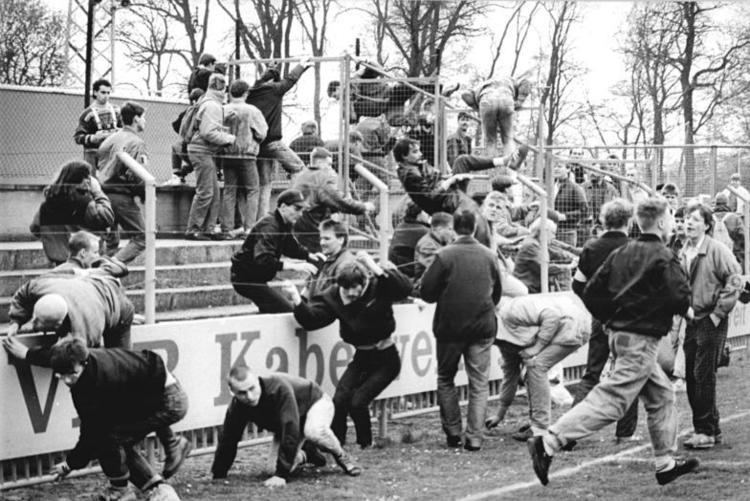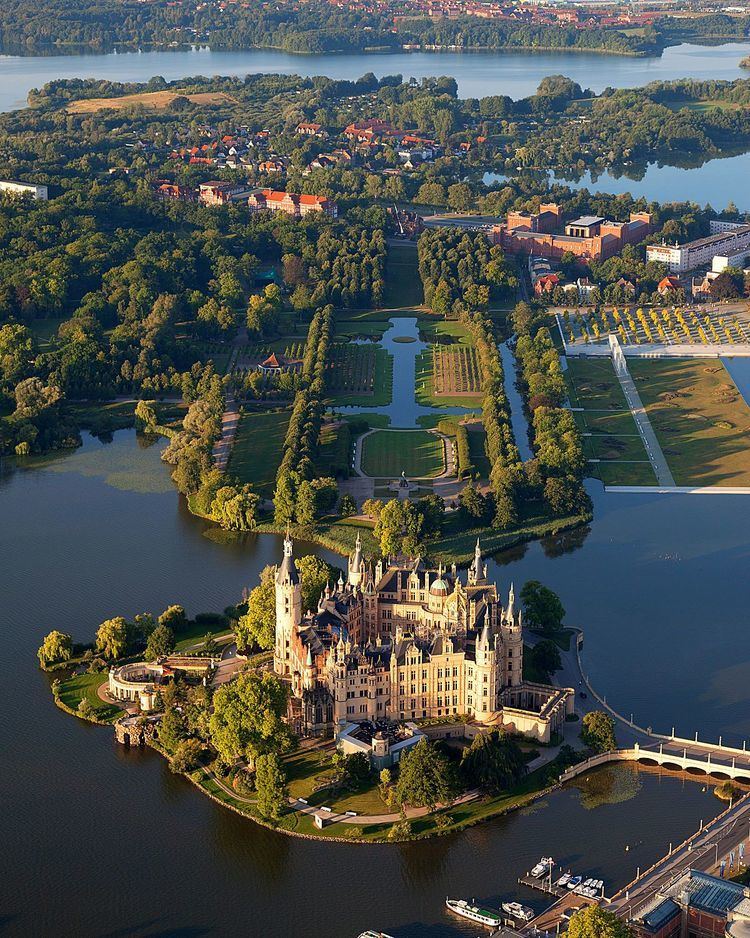Country Germany Area 130.46 km2 District Urban district | ||
Points of interest Schwerin Palace, Staatliches Museum Schwerin, Schwerin Cathedral, Pfaffenteich, Mecklenburg State Theatre | ||
Mayor Angelika Gramkow (Die Linke) | ||
Map of Schwerin
Schwerin ([ʃvɛˈʁiːn] or [ʃvəˈʁiːn], Mecklenburgian Swerin, Latin Suerina) is the capital and second-largest city of the northern German state of Mecklenburg-Vorpommern. The population is 91,583 (as of December 31, 2013) and 98.000 as of July 2016.
Contents
- Map of Schwerin
- Schwerin castle germany
- History
- City Outline
- Transport
- Main sights
- Museums
- 18th century
- 19th century
- 1901 1950
- 1951 2000
- References

Schwerin was first mentioned in 1018 as Wendenburg and was granted city rights in 1160 by Henry the Lion, thus it is the oldest city of Mecklenburg-Vorpommern. It is known for its romantic Schwerin Palace, situated on an island in the Lake Schwerin. The palace was one of the main residences of the dukes and grand dukes of Mecklenburg until 1918 and is the official seat of the Landtag of Mecklenburg-Vorpommern since 1990. The city also has a largely intact old town, thanks to only minor damage in World War II.

Schwerin is located within the metropolitan region of Hamburg and close to that of Berlin, and to nearby regiopolises of Rostock and Lübeck.
Schwerin castle germany
History
Schwerin is surrounded by lakes. The largest of these lakes, the Schweriner See, has an area of 60 km2. In the midst of these lakes there was a settlement of the Slavic Obotrite (dated back to the 11th century). The area was called Zuarin (Polabian Zwierzyn), and the name Schwerin is derived from that designation. In 1160, Henry the Lion defeated the Obotrites and captured Schwerin. The town was subsequently expanded into a powerful regional centre. A castle was built on this site, and expanded to become a ducal palace. It is supposedly haunted by the small, impious ghost, called Petermännchen ("Peterman").
In 1358, Schwerin became a part of the Duchy of Mecklenburg, making it the seat of the duchy from then on. About 1500, the construction of the Schwerin Palace began, as a residence for the dukes. After the division of Mecklenburg (1621), Schwerin became the capital of the Duchy of Mecklenburg-Schwerin. Between 1765 and 1837, the town of Ludwigslust served as the capital, until Schwerin was reinstated.
In the mid-1800s, many residents from Schwerin moved to the United States, many to Milwaukee, Wisconsin. Today Milwaukee and Schwerin are sister cities.
After 1918, and during the German Revolution, resulting in the fall of all the German monarchies, the Grand Duke abdicated. Schwerin became capital of the Free State of Mecklenburg-Vorpommern thereafter.
At the end of World War II, on 2 May 1945, Schwerin was taken by U.S. troops. It was turned over to the British on 1 June 1945, and one month later, on 1 July 1945, it was handed over to the Soviet forces, as the British and American forces pulled back from the line of contact to the predesignated occupation zones. Schwerin was then in the Soviet Occupation Zone which was to become the German Democratic Republic (GDR). Initially, it was the capital of the State of Mecklenburg which at that time included the western part of Pomerania (Vorpommern). After the states were dissolved in the GDR, in 1952, Schwerin served as the capital of the Schwerin district (Bezirk Schwerin).
After reunification in 1990, the former state of Mecklenburg-Vorpommern was recreated as one of the Bundesländer. Rostock was a serious contender for state capital but the decision went in favour of Schwerin.
City Outline
The urban area of Schwerin is divided into 18 local districts, each with a local council. The districts consist of one or more districts. The local councilors have between 5 and 15 members depending on the number of inhabitants. They are determined by the city council for the duration of the election period of the city council after each municipal election. The local councilors are to hear important matters concerning the district and have a right of initiative. However, the final decisions are made by the city council of the city as a whole.
The 18 present districts with their respective districts are:
District 1: Schelfstadt, Werdervorstadt, Schelfwerder
District 2: Altstadt (Old Town), Feldstadt, Paulsstadt, Lewenberg
District 3: Grosser Dreesch (former Dreesch I)
District 4: Neu Zippendorf (former Dreesch II)
District 5: Mueßer Holz (former Dreesch III)
District 6: Gartenstadt, Ostorf (formerly Haselholz, Ostorf)
District 7: Lankow
District 8: Weststadt
District 9: Krebsförden
District 10: Wüstmark, Göhrener Tannen
District 11: Görries
District 12: Friedrichsthal
District 13: Neumühle, Sacktannen
District 14: Warnitz
District 15: Wickendorf
Locality 16: Medewege
Locality 17: Zippendorf
Locality 18: Mueß
Transport
City buses and trams are run by NVS (Nahverkehr Schwerin).
Schwerin Hauptbahnhof (central station) is connected by rail to Berlin, Hamburg and Rostock.
